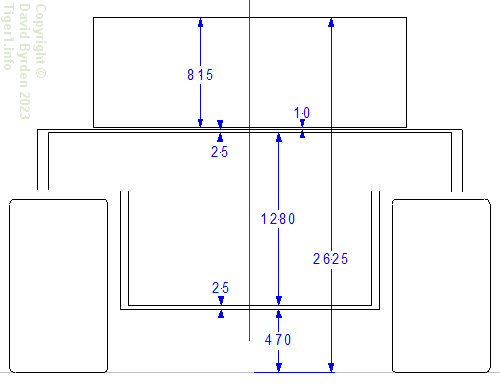The height of the Tiger's turret and hull can be a confusing topic. Various sources quote figures that can seem incompatible. I will explain how to sum the height of the turret's top flat surface above the ground.

The ground clearance of the tank is specified as 470mm. That refers to the bottom surface of the belly plate. Some parts of the nose and suspension extend below that level. In later models of Tiger, a rectangular hatch was present under the engine too. None of those items are taken into account.
The actual ground clearance of a real Tiger might not be very near to the idealised 470mm, due to the suspension settling with age, loading of the tank with heavy ammunition, wear on the tyres, etc.
The height of the hull and turret are specified in German documentation, and confirmed by surveys of museum vehicles. Again, the hull height is to the upper surface of the main roof plate, ignoring certain features that extend beyond that. There is a gap between turret and hull, nominally 10mm, but that too could vary.
The total height shown here (2625mm) is directly specified in one German drawing [6] , consistent with all of the other figures.

The Tiger evolved over its lifetime, and some changes affected its height. In late 1943 a new cleated track was adopted, with the cleats adding 15mm to the thickness of the track links. Early in 1944 the turret roof was thickened to 40mm, with the extra thickness being added on the outside.
Those two changes, combined, raised the height of the turret roof a further 30mm above the ground.
[1] Russian intelligence survey of Tiger track link.
[2] German diagram of transport track link.
[3] Survey of Tiger 250122, at Bovington museum, by David Byrden
[4] Survey of Tiger 250122, at Bovington, by John Desaleux
[5] Drawing J3154 : "Einbau des ZF. 12 Gang Elektro Getriebe."
[6] Drawing 3306 : "Untersuchung über Verlademöglichkeit des Tiger E"
[7] Der Panzerkampfwagen VI und seine abarten, Walter J. Spielberger, Motor Buch Verlag